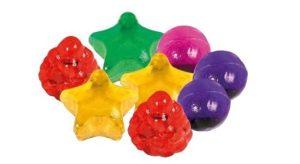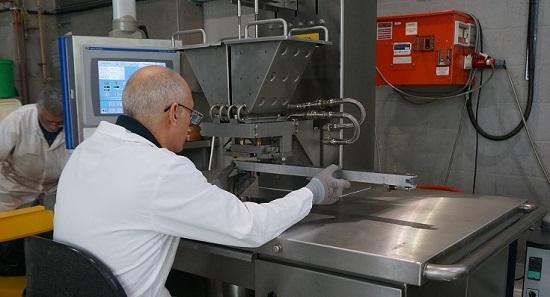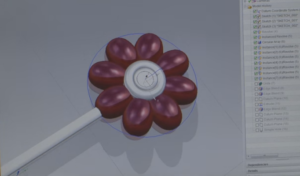Making the Mold: Baker Perkins Among Confectioners Embracing 3D Technologies for Candy Making
 Whimsy can be a very serious business, just ask anyone in the confectionery industry. While many people casually enjoy lollipops and gummy candies, few realize the depths that go into product development behind fun shapes and increasingly customizable options — especially as newer and newer technology comes into play. While 3D printers may not have featured in Willy Wonka’s workshop of wonders, candy makers around the world are seeing how useful they can be. From France’s Babines to the globally expanding Magic Candy Factory, and even with custom (and royal) lollipop likenesses, we’ve certainly been following the use of 3D printing in delicious applications for some time. 3D printed molds and techniques are featuring increasingly in confectioneries everywhere — including those in operation for over a century.
Whimsy can be a very serious business, just ask anyone in the confectionery industry. While many people casually enjoy lollipops and gummy candies, few realize the depths that go into product development behind fun shapes and increasingly customizable options — especially as newer and newer technology comes into play. While 3D printers may not have featured in Willy Wonka’s workshop of wonders, candy makers around the world are seeing how useful they can be. From France’s Babines to the globally expanding Magic Candy Factory, and even with custom (and royal) lollipop likenesses, we’ve certainly been following the use of 3D printing in delicious applications for some time. 3D printed molds and techniques are featuring increasingly in confectioneries everywhere — including those in operation for over a century.
With roots drawing back to the 19th century, Baker Perkins has a storied history of expansion, merging, and adapting to new circumstances and environments. Today, some of this history manifests in the company’s increasing willingness to test out the latest in tech as it shows relevance to their confectionery business. Recently embracing new technologies for 3D starchless jelly depositing as well as 3D modeling and 3D printing for models and molds, Baker Perkins seems to be all in — not a big surprise for a company with a dedicated Confectionery Innovation Centre.
 In late May, Baker Perkins announced the introduction of their “technology to deposit full 3-Dimensional jellies.” Indicated for high-output production in a high-margin market, 3D jelly candies can be produced in a wide array of options, including in 3D shapes impossible to produce with similar starch molding systems, as these formulations are based on pectin- or carrageenan-based quick-setting recipes. With variety spanning color, patterning, fillings, and shapes, design is a critical consideration here — and this is where 3D tech comes into play. Baker Perkins notes:
In late May, Baker Perkins announced the introduction of their “technology to deposit full 3-Dimensional jellies.” Indicated for high-output production in a high-margin market, 3D jelly candies can be produced in a wide array of options, including in 3D shapes impossible to produce with similar starch molding systems, as these formulations are based on pectin- or carrageenan-based quick-setting recipes. With variety spanning color, patterning, fillings, and shapes, design is a critical consideration here — and this is where 3D tech comes into play. Baker Perkins notes:
“New designs can be visualised and models made very quickly using 3D CAD and 3D printing, which is also used to make test moulds for trials.”
 CAD design and 3D printing have often gone hand-in-hand with mold-making technology, as we’ve seen time and time again, and which is making more of a splash than ever in the candy business. With 3D printed molds, candies can be made quickly to test out new designs, create one-off patterns, and offer enhanced customization capabilities, all at a lower cost than traditional molding techniques. Baker Perkins utilizes ServoForm depositors to lay down the candies used for their gummies and lollipops.
CAD design and 3D printing have often gone hand-in-hand with mold-making technology, as we’ve seen time and time again, and which is making more of a splash than ever in the candy business. With 3D printed molds, candies can be made quickly to test out new designs, create one-off patterns, and offer enhanced customization capabilities, all at a lower cost than traditional molding techniques. Baker Perkins utilizes ServoForm depositors to lay down the candies used for their gummies and lollipops.
Furthermore, as ConfectioneryNews.com recently reported, Baker Perkins is seeing use for 3D printing and CAD design in a new version of its ServoForm lollipop depositor. The new ServoForm lollipop system focuses on flat lollipops, rather than ball-shaped, allowing for more ways to add character likenesses and other shapes — all designed in 3D. Using 3D printed molds not just to evaluate new designs, but to actually test them out with hot candy syrups on lab or full production systems, the Baker Perkins team is able to efficiently move new products to market all the faster. 3D design allows for the quicker, more accurate production of designs such as logos or easily recognizable characters, which it is imperative that a consumer could quickly identify (and then, of course, devour). 3D printed molds offer significantly lower costs and quicker turnaround than the traditional PTFE-coated metal test molds that the company had been using previously. Have you used 3D printing in any baking ventures? Discuss further in the 3D Printing in Bakeries forum over at 3DPB.com.
[Images: Baker Perkins]https://youtu.be/mJjDpaxKWB0
Subscribe to Our Email Newsletter
Stay up-to-date on all the latest news from the 3D printing industry and receive information and offers from third party vendors.
Print Services
You May Also Like
3D Printing Grows to $15.9B in 2024 Amid Shifting Industry Dynamics
The global additive manufacturing (AM) market reached $15.9 billion in calendar year 2024, according to “Q4 2024 3DP/AM Market Data and Forecast” from Additive Manufacturing Research (AM Research). Despite a...
3DPOD 247: LJ Holmes, Executive Director for the Center of Advanced Manufacturing and Materials at Harrisburg University
Executive Director for the Center of Advanced Manufacturing and Materials at Harrisburg University, Larry “LJ” Holmes is a pioneer in applying additive manufacturing to defense and other critical sectors. Part...
Thai Startup OsseoLabs to Cut Surgery Time with 3D Printed Magnesium Implants
A patient undergoing mandibular reconstructive surgery typically faces two separate operations: one to place a custom-fit titanium plate and another month later to remove it. But what if that second...
Japanese Advanced Manufacturing Capabilities Grow in Europe with Sodick’s Purchase of Prima Additive
The global economy is currently undergoing a reshuffling in terms of what gets manufactured where. In large part, this trend is being driven by new geopolitical alliances and the need...

























